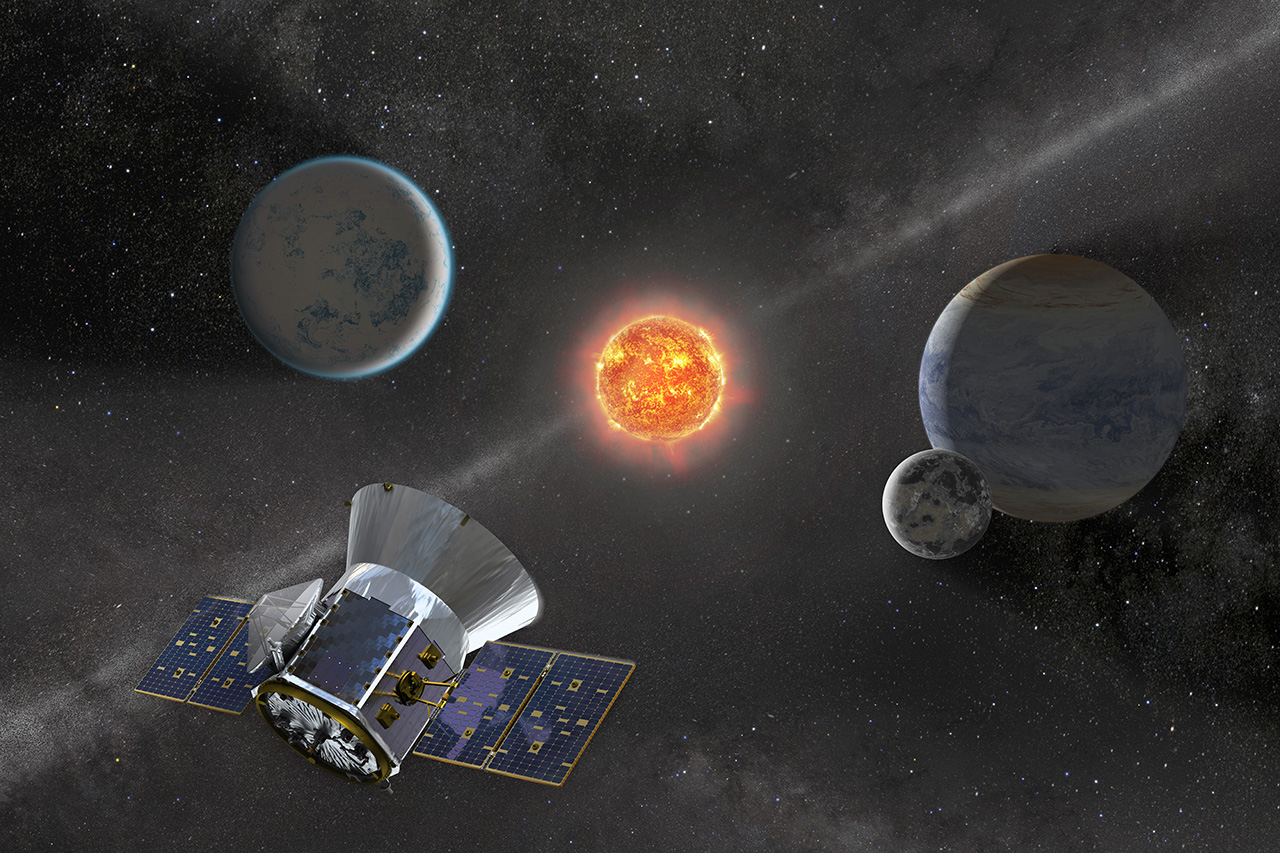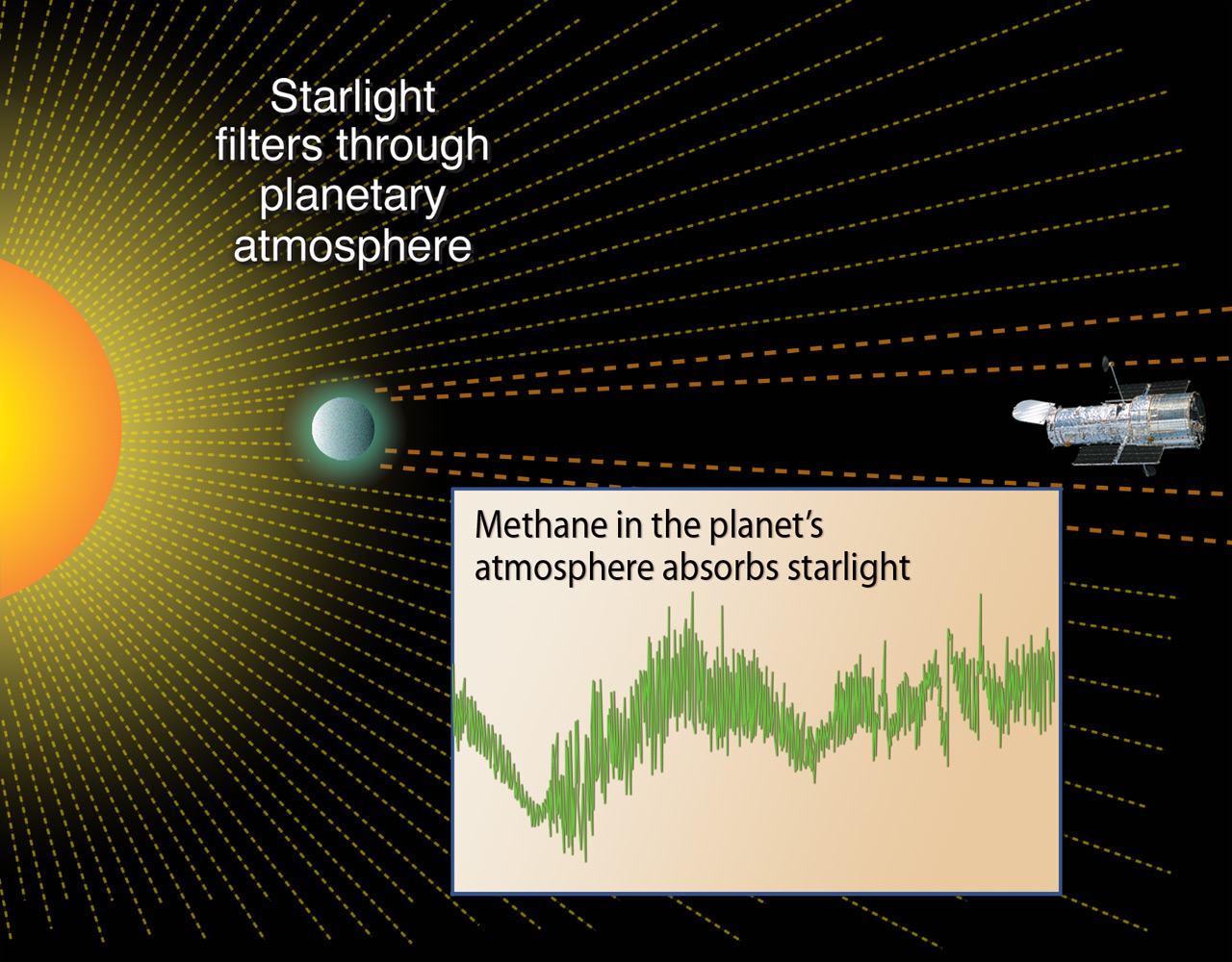NASA's TESS Satellite Will Supercharge Search for Nearby, Earth-Like Worlds
On Monday, April 16, the Transiting Exoplanet Survey Satellite (TESS) will launch from Cape Canaveral Air Force Station in Florida. NASA's new exoplanet hunter will train its sights on nearer, brighter stars than its predecessors did. If TESS lives up to scientists' predictions, it could energize our search for life in the cosmos.
When the Kepler space telescope launched in 2009, scientists didn't know what fraction of stars hosted planets. The Kepler mission was a statistical exploration looking to see how frequently planets occur around stars, Harvard astronomer David Latham told Space.com. "One of the big surprises from Kepler was to find this whole population of planets with sizes between that of Neptune and Earth — and there aren't any in our solar system, zero — and they're everywhere out there," said Latham, who's worked on the Kepler project for nearly 20 years.
"Kepler is what made us become aware that planets are as common as telephone poles," SETI Institute astronomer Seth Shostak told Space.com."But the stars that Kepler was staring at for four years … they were all somewhere between 500 and 1,500 light-years away." TESS will survey the local neighborhood for planets like Earth. [NASA's TESS Exoplanet-Hunter in Pictures]

TESS is designed to find planets orbiting nearby stars spread across the sky, astrophysicist and pioneering exoplanet researcher Sara Seager at the Massachusetts Institute of Technology told Space.com. The satellite is not specifically intended to look for planets that can support life, but it can find planets orbiting in the habitable zone of small stars, said Seager, who serves as a deputy science director on TESS.
TESS will find signals of planet candidates, Seager said. A lot of follow-up work will go into determining whether these candidates are truly planets, rather than binary stars, artifacts in the data or something else. Once this is accomplished, deeper investigation can begin. Unlike with Kepler, the stars TESS examines will be bright enough and close enough to allow detailed follow-up studies with large ground telescopes, the Hubble Space Telescope and the upcoming James Webb Space Telescope.
What's more, these planets are close enough for other telescopes to peer inside their atmospheres. When a planet transits its star, some of the starlight passes through the planet's atmosphere before reaching Earth. Different gases absorb different wavelengths of light, and scientists can determine the composition of the planet's atmosphere by analyzing the spectrum of this light using more-powerful observatories. [7 Ways to Discover Alien Planets]

"Twenty years ago, if you told me that we were going to do this kind of spectroscopy of atmospheres of planets around other stars, I would have said you're crazy," said Latham. "Now, we're doing it."
Get the Space.com Newsletter
Breaking space news, the latest updates on rocket launches, skywatching events and more!
Scientists are looking for signatures of life, byproducts that organisms might emit into the atmosphere. "The first thing is we're looking for water vapor," Seager said, "because all life, as we know it, needs liquid water. And water vapor is a sign of surface water."
"After water, oxygen would be fantastic. Oxygen is our best biosignature gas on Earth," Seager said, so we’re looking for what we know. "After that, we have lots of gases we're interested in, but mostly in space were looking for gases that don't belong that are there in high quantities, enough to really be detected from far away." [The Drake Equation Revisited: Interview with Planet Hunter Sara Seager]
Many products of biology can also come from geology, though. For instance, if scientists see methane alongside many other hydrogen-rich gases, the source is likely not biological, said Seager. However, finding methane together with oxygen would be promising, because these gases would react with each other and become something else if they weren't being continually produced, she said. Unfortunately, it's often impossible to completely rule out one source over the other.
On the other hand, scientist may overlook signs of life that is radically different from us. "It's a little bit like the drunk looking for his keys — he looks under the lamppost, because that's where he can see them," Latham said. "We look for life that is similar to our own, because we think we understand the organic chemistry involved and so we think we know how to interpret [evidence for it]."

The search for intelligent life is guided by the Drake equation, a formula devised by astronomer Frank Drake to estimate the likelihood of receiving signals from intelligent civilizations. The terms of the equation begin with the number of stars in our galaxy and proceed to the number of civilizations actively broadcasting their presence into space. Kepler mostly firmed up the fraction of stars that have planets. The TESS mission will enrich our understanding of how many planets could support life, and even the fraction of those planets where life may actually occur, Seager explained, constraining the equation further.
"Thirty years ago,if you ask[ed] people, 'Do you think there are a lot of planets out there?' most people who knew anything about astronomy would say, 'Yeah, probably there are.' But nobody knew," said Shostak. With Kepler, researchers discovered that the universe is littered with planets. "For the first time in 300,000 years, Homo sapiens had found planets around other stars," he said.
Shortly thereafter, scientists began to get enough data to hypothesize that many of those planets might be habitable. Over the past quarter-century, science has increasingly led scientists to believe that the existence of life may not be a miracle after all, Shostak said. And he said he sees no evidence that this trend will stop.
TESS will lead the way for a wealth of discoveries and deepen our understanding of many phenomena in the cosmos. "There's technical astrophysical issues that will interest a lot of the scientists in the community," said Latham, "but I think that the question that is going to catch the attention of the educated public is this big one: Are we alone?"
Visit Space.com Monday, April 16 for complete coverage of NASA's TESS mission launch. A live webcast on the launch begins at 6 p.m. EDT (2200 GMT).
Join our Space Forums to keep talking space on the latest missions, night sky and more! And if you have a news tip, correction or comment, let us know at: community@space.com.

Harrison Tasoff is a science journalist originally from Los Angeles. He graduated from NYU’s Science, Health, and Environmental Reporting Program after earning his B.A. in mathematics at Swarthmore College. Harrison covers an array of subjects, but often finds himself drawn to physics, ecology, and earth science stories. In his spare time, he enjoys tidepooling, mineral collecting, and tending native plants.









